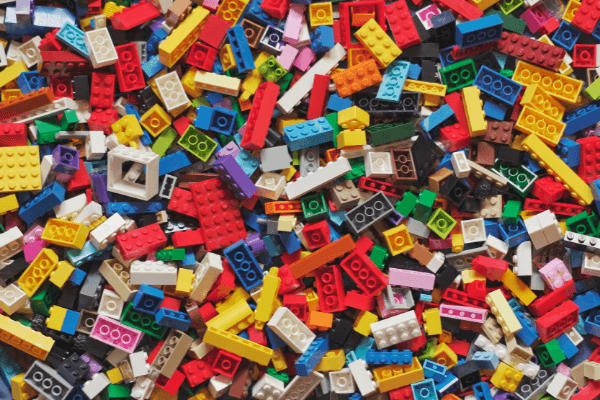Plastic injection molding is not only a very useful technology for large-scale production, but also in the industrial design process of a product. In this article we explain what plastic injection molding is, its applications, pros and cons.
What is plastic injection molding?
Injection molding is a manufacturing technique that uses plastic to make parts and articles and allows for a wide range of different plastic materials and finishes. It is a process that was invented as far back as the 19th century, but it is still one of the best ways to produce complex parts at low cost, which is why it is considered one of the most popular methods on the planet.
In addition, the injection molding machine uses custom molds to fill them to specification, creating identical copies that can be customized in a variety of ways. Let’s take a look at what this technology is and how it works.
What is the injection molding process?
The process can be subdivided into three phases:
- Injection
- Cooling
- Redesign
The manufacture of parts by injection molding uses plastic, usually in the form of granules, to be melted inside the machine and then injected into a mold under high pressure. The material is then cooled, solidified and released by opening the two halves of the mold.
To build a mold, there are 4 main phases: design, prototyping, prototype testing – very useful when checking important factors such as the finished surface of the plastic part and how the channel separates from the part – and the implementation of corrections and readjustments to the mold.
Thanks to this process, a predefined, fixed-size plastic product can be produced with reduced production costs, which means that the entire process is much more cost-effective.
It should be borne in mind that the parts used in the injection molding technique must be carefully designed, as it is necessary to create the right mold, usually using materials such as steel or aluminum, for the subsequent mass production of the plastic parts.
What plastics are used and their applications
Plastic molded parts are made from thermoplastics, as they are composed of polymers that are capable of melting at high temperatures and solidifying at low temperatures. Unlike thermosetting plastic material, which burns if overheated, thermoplastics can be heated and cooled several times before they degrade beyond their use.
Most commonly for injection molding, thermoplastics are used in pellet form. However, plastic pellets can also be mixed with colorants to give the parts a particular color, recycled material and even glitter or other special additives.
Most common types of thermoplastics
- Acrylonitrile Butadiene Styrene (ABS)
ABS is a rigid, lightweight material that is very popular for plastic injection molding. For example, Lego blocks are made from this material.
- Polycarbonates
They are transparent, impact resistant and can withstand high levels of plastic deformation without breaking or cracking. They are used to make eyeglass lenses, medical devices, mobile devices and even bulletproof glass.
- Nylon
Nylon has electrical properties and is tough, so this thermoplastic is found in a wide range of applications, from sports equipment to industrial components.
- Polypropylene (PP)
This is a flexible material that has good chemical resistance and does not leach into food products. For this reason it is used for the manufacture of containers and other utensils.
- Polyethylene (PE)
It is one of the most versatile plastics. Polyethylene’s high ductility, tensile and impact strength, low moisture absorption and recyclability make it an ideal material for plastic containers and bags.
Advantages and disadvantages
As with any manufacturing method, there are advantages and disadvantages that can apply to different circumstances and needs. With this in mind, let’s review some of the most important pros and cons that plastic injection molding can offer.
Advantages of plastic injection molding
- Accuracy: because of the way the material is injected and shaped in the mold, the number of imperfections can be minimized. In other words, a part identical to the previous one can be produced time after time. Thanks to this feature, injection molding is used in demanding industries such as aerospace and automotive.
- Complex details: Injection molding allows companies to produce even the most complicated mold designs, down to the smallest detail.
- Durability: it offers great possibilities in terms of the durability and reliability of plastic parts. For example, fillers can be added to the injection molds that are created, which can help reduce the density of the plastic material and increase the strength of the part.
- Automation: the manufacturing process can be automated, which means both minimizing the chances of failure and mass production.
- Cost reduction: injection molding is one of the most cost-effective solutions available for producing parts.
- Environmentally friendly: plastic injection molding produces very little waste and scrap materials and, in addition, plastic materials can be reused, thus contributing to recycling.
Disadvantages of plastic injection molding
- Initial cost and time: Injection molding can be very cost-effective, especially for large production runs, as the production cost per part is relatively low. However, before you can manufacture, you will have to design and create the mold itself. However, strategic design and prototyping teams can make your job easier and help reduce initial time and costs.
- Design limitations: Because plastic injection molding relies on heating and cooling the plastic, if the shape of the mold causes the plastic to cool inconsistently, the part will be vulnerable to defects. However, this risk can be limited by ensuring that the mold walls are uniform in size so that the part solidifies optimally.
In short, plastic injection molding is a widely used, efficient, environmentally friendly and economical technique. If you are thinking of designing a mold to manufacture your products, contact Infinitia, our extensive experience and the reliability of our experts will guarantee the success of your design.

